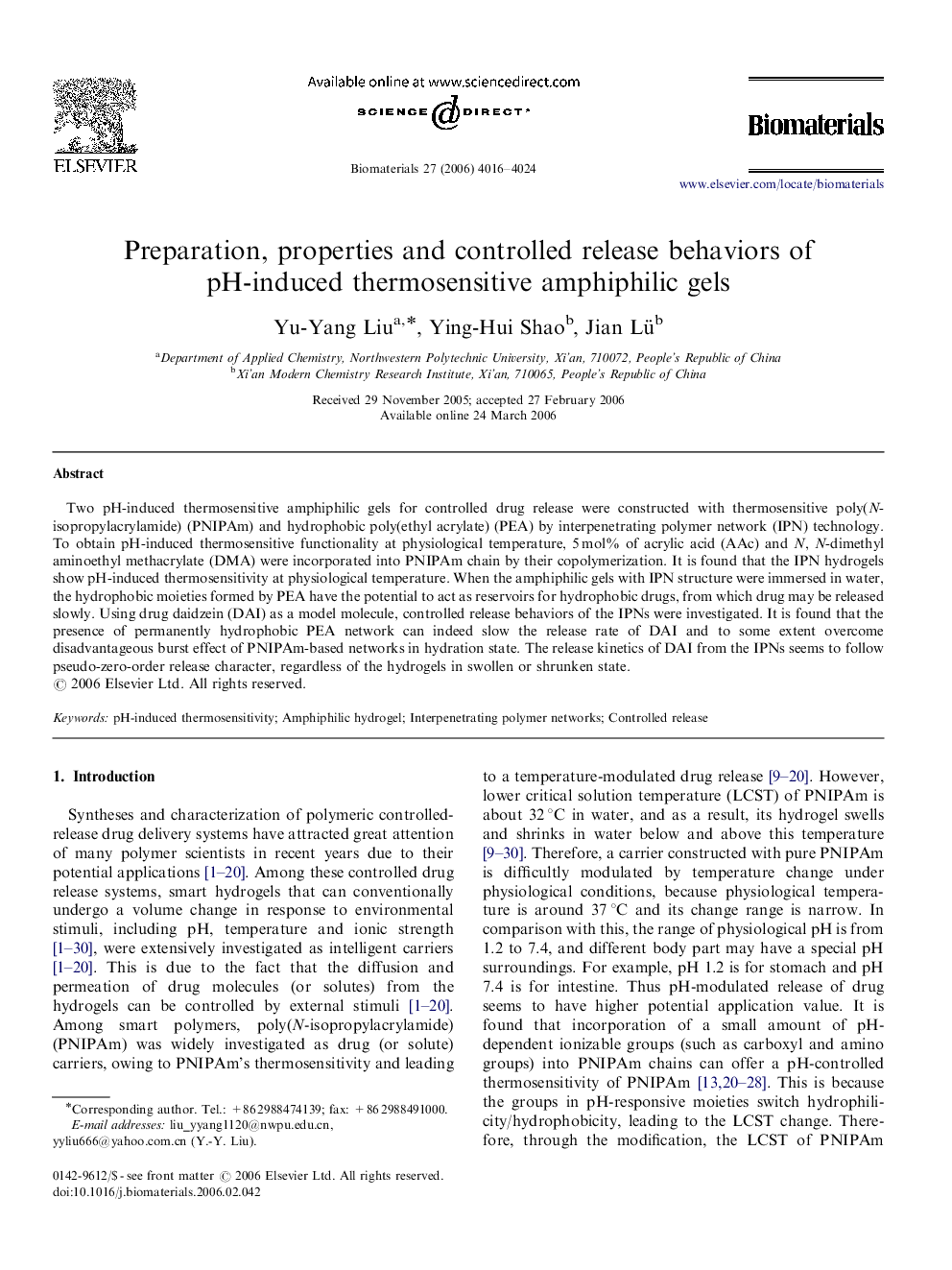| Article ID | Journal | Published Year | Pages | File Type |
|---|---|---|---|---|
| 11409 | Biomaterials | 2006 | 9 Pages |
Two pH-induced thermosensitive amphiphilic gels for controlled drug release were constructed with thermosensitive poly(N-isopropylacrylamide) (PNIPAm) and hydrophobic poly(ethyl acrylate) (PEA) by interpenetrating polymer network (IPN) technology. To obtain pH-induced thermosensitive functionality at physiological temperature, 5 mol% of acrylic acid (AAc) and N, N-dimethyl aminoethyl methacrylate (DMA) were incorporated into PNIPAm chain by their copolymerization. It is found that the IPN hydrogels show pH-induced thermosensitivity at physiological temperature. When the amphiphilic gels with IPN structure were immersed in water, the hydrophobic moieties formed by PEA have the potential to act as reservoirs for hydrophobic drugs, from which drug may be released slowly. Using drug daidzein (DAI) as a model molecule, controlled release behaviors of the IPNs were investigated. It is found that the presence of permanently hydrophobic PEA network can indeed slow the release rate of DAI and to some extent overcome disadvantageous burst effect of PNIPAm-based networks in hydration state. The release kinetics of DAI from the IPNs seems to follow pseudo-zero-order release character, regardless of the hydrogels in swollen or shrunken state.
